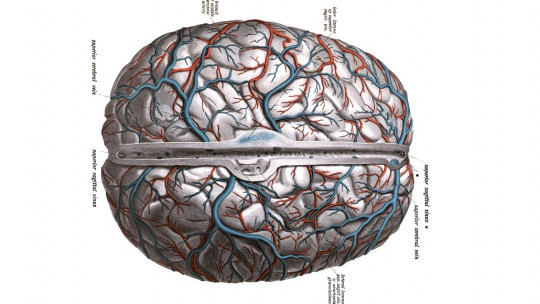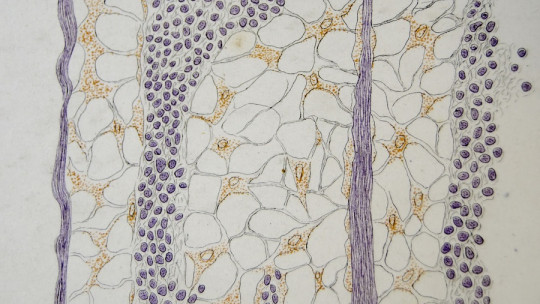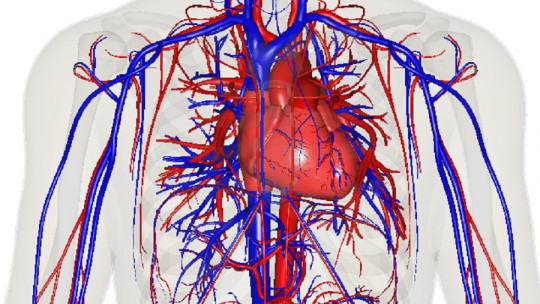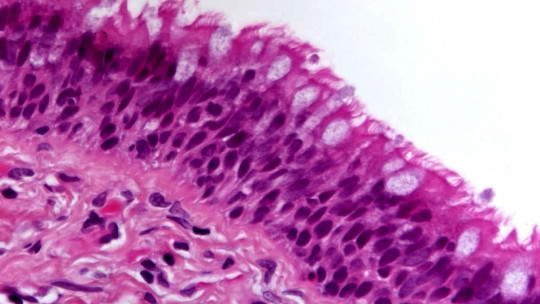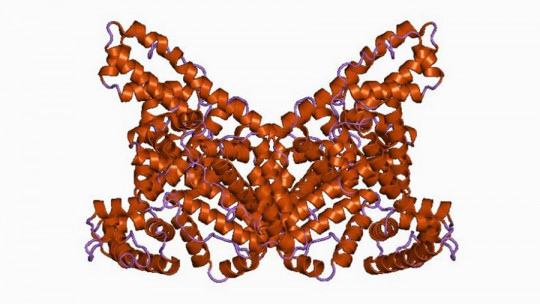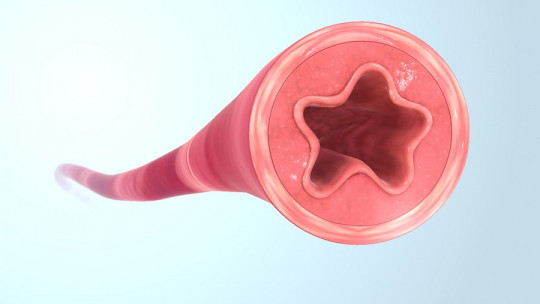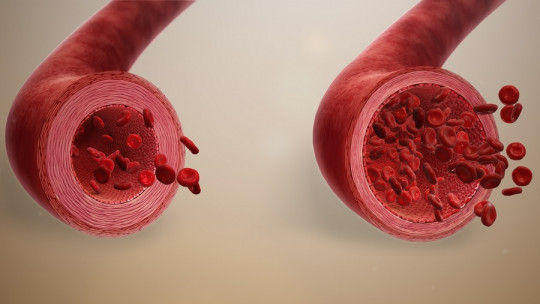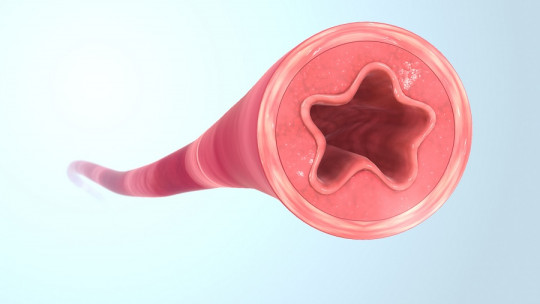
Blood is a vitally important liquid connective tissue that circulates through different types of blood vessels in order to perform multiple functions essential for life: transport of waste substances, help in dementia against infections, thermoregulation of the body. body, transport hormones, enzymes and also other regulatory substances, transport of nutrients, etc.
In this article we will talk about the different types of blood vessels that the human body has so that we can better understand its functions.
What is the circulatory system?
Before explaining the different types of blood vessels, it is worth giving a few brief touches about the circulatory system, this being one of the most important devices that the human body has. Its most important functions are the following:
What are the types of blood vessels?
The human body basically has 3 types of blood vessels: arteries, capillaries and veins And each of them has a different structure that characterizes it, there are also differences with respect to the way blood flow circulates through each of these types.
1. Arteries and their functions
The first types of blood vessels that we are going to talk about are the arteries that are found around the body, they are made up of 3 layers called have also been called “tunicas” and these, from the center outwards, are known as: the tunica intima, the tunica media and, finally, the tunica adventitia or exterior.
The blood that flows through the arteries does so at a high pressure, with basically pressure gradients (from a higher pressure to a lower one) and, secondarily, it is helped by the force of gravity.
Before talking about the first types of blood vessels, which are arteries, it is convenient to explain its main functions these being the ones we are going to list below:
Now that we know roughly what the main functions of arteries are, let’s see what the different types are. They can be classified based on their size and the characteristics of the tunica media thus differentiating between elastic, muscular, small arteries and arterioles.

1.1 The elastic arteries
The elastic arteries They are the thickest that can be found in the body and are the ones that come directly from the ventricles of the heart the organ that is responsible for pumping blood at high pressure through these arteries, as well as through the pulmonary artery and the aorta.
In addition, elastic arteries are responsible for conducting blood to the pulmonary and systemic circuits of the body, which is why they have also been called “conducting arteries.” On the other hand, the branches that come from larger arteries are also classified within the category of elastic arteries.
It should be noted that these types of blood vessels are arteries that are called elastic because they Your tunica media has an elastic component of great importance for proper blood circulation
1.2 The muscular arteries
Muscular arteries are intermediate in size between small and larger arteries, and are known as “muscular” because they The tunica media they have has a lower percentage of elasticity than the previous ones and also has a greater muscular component
It is important to mention that blood flows in muscular arteries at a lower pressure than in larger arteries (e.g., elastic arteries).
- You may be interested: “Muscular system: what it is, parts and functions”
1.3 Small arteries and arterioles
The arteries branch more and more into narrower vessels, until in the end they end in tiny ones that are known as arterioles, these being the last small branches that the arterial system has
On the other hand, small arteries in the body have a wide variability in diameter and are usually distinguished from each other by the number of smooth muscle layers. Besides, These small arteries could have up to 8 layers; while arterioles usually have 1 or 2 layers
Small arteries are responsible for regulating blood flow to the capillary networks and this is possible thanks to the contraction of their smooth muscles, which is why they are also known as “resistance vessels”.
It should be noted that at the ends or final parts of the arterioles there are very small vessels that form the metarterioles and this is where the precapillary sphincters are located, these being the ones responsible for reducing blood pressure so that it can reach the capillaries.
- Related article: “The 25 main organs of the human body”
2. Capillaries
Another type of blood vessel that we are going to talk about in this article are capillaries, which They are the blood vessels that are smaller in size and because of them the blood pressure is lower, so it circulates at a lower speed in order to enable an exchange of substances between the tissues and the blood. Furthermore, the wall of the capillaries is made up of a basal lamina and an endothelium.
Next, we are going to see the 3 types of existing capillaries: continuous capillaries, fenestrated and discontinuous.
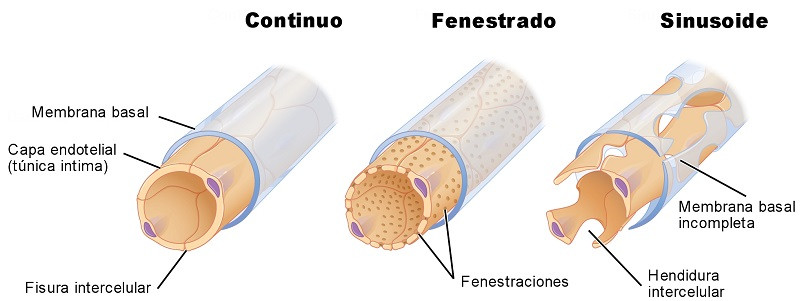
2.1 Continuous capillaries
First, the continuous capillaries They are those that are surrounded by a continuous endothelium, the capillaries also being the least permeable and the most abundant These capillaries can be found in the lungs, in the central nervous system (CNS), in the heart, in skeletal muscle, in connective tissue, etc.
2.2 Fenestrated capillaries
The capillaries generated They have endothelial cells that are found with perforations and they are found within the endocrine glands and also in all those tissues of the body where there is a very intense exchange between different substances, such as the gallbladder, kidneys or intestinal mucosa.
2.3 Discontinuous capillaries
Discontinuous capillaries, which are also known as “sinusoids”, They are those capillaries that have greater permeability because the endothelial cells leave larger spaces in them and, therefore, these are capillaries that are usually found in places in the body where there is a great exchange between substances, such as the liver, spleen or bone marrow.
- You may be interested: “The 8 differences between veins, arteries and capillaries”
3. The veins
The last of the groups of blood vessels that we are going to talk about would be the veins, which They are responsible for receiving the blood that comes from the capillaries and the veins are those that return blood flow to the heart with the aim of restarting the entire circuit through which the blood passes so that the entire body and its organs can fulfill all their functions in the most efficient way possible.
The blood that circulates through the veins does so at a lower speed and pressure than when it circulates through the arteries and, in addition, the veins have the same structure as the arteries, made up of 3 tunics.
Notably veins have the capacity to store a large amount of blood, which is why they have also been called “capacitance vessels”. On the other hand, these are also usually classified based on their size (from smallest to largest).
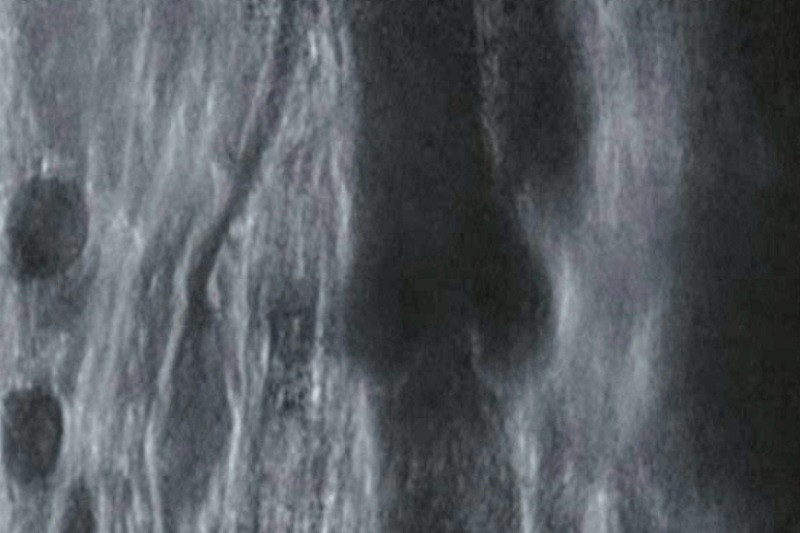
3.1 Venules and small veins
The smallest veins in the entire body, also called venules, are veins that are very small in size and, within this category, there are postcapillary venules that are responsible for receiving the blood that comes from the capillaries in order to direct that blood flow towards the muscular venules. Following the venules are the small veins.
3.2 The median veins
Medium veins are those found in the greatest quantity in the body, being a type of vein that can reach a diameter of 10 millimeters. A large part of the median veins, especially those found in the lower extremities, They have a type of valve in their internal tunic that serves to prevent retrograde blood flow from occurring due to the force of gravity, since otherwise the blood would not circulate correctly through this part of the body and would remain accumulated in the same place.
3.3 The large veins
Finally, within these types of blood vessels, such as veins, we are going to talk about the large veins, which are responsible for receiving blood flow from the other veins of the body in order to return it to the heart, at the level of the right needle that connects with this organ.
It should be noted that these veins are the ones with the largest diameter in the entire body far exceeding the 10 millimeters that the medium veins could reach at most.

